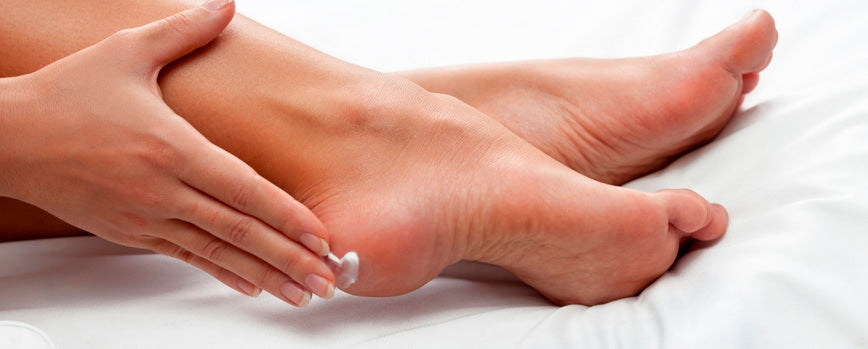Reopenings: Survival Guide for Hair and Beauty Salons and Hairdressers with Covid-19 standards
Covid-19 has affected the way we live radically and hastily, because no one was prepared to deal with a pandemic, least of all businesses that require direct contact with customers, such as beauty salons and hairdressers. With the lifting of the quarantine, some businesses are preparing to reopen their doors, but with strict safety and hygiene measures. Employers and workers are preparing by obtaining new salon supplies that will help them minimise the risk of infection. The new regulations that will soon be installed in beauty salons and hairdressers will have to be complied with and accepted by employees and customers, to avoid new sources of contagion at work.

Beauty Salons & Hairdressers after Covid-19
How will hairdressers and beauty salons work from now on?
As long as there is no cure for COVID-19, beauty salons and hairdressers will have to operate in a very different way than they are used to. Preventive measures such as the following should be taken:
Preventive measures should be taken as follows:
Reduction of persons inside the establishment.
One of the main measures taken in hairdressing and beauty salons is the mandatory two-metre distance between people. This involves reducing the number of spaces and customers in the establishment.
In the case of vanity units and head washers that do not have a physical separation barrier, one must be left free through the middle of the customers. The number of persons present on the premises should not exceed 30% of the seating capacity.
The number of persons present on the premises should not exceed 30% of the seating capacity of the premises.
Attention will be by appointment only
It will no longer be possible to wait for an appointment on the premises if there is no guarantee of the required space. By means of the appointment-only system there will be no contact between customers. This will mean that customers will sometimes have to wait their turn in the street or in their vehicle.In addition to this, beauty salons and hairdressers should reserve special opening hours for clients who are over 65 years of age, as they are a risk group. It is also recommended that paper diaries be eliminated and replaced by an electronic system.
One feasible option is to send appointment details by email or other courier service to clients, for justification of travel.
Disposable equipment
It is advisable to use disposable materials with each client to avoid the risk of contamination. An area should be provided in the salon for the storage of this equipment and other salon products such as face masks, towels, gowns, capes and other types of equipment.
For the disposal of these materials, containers containing a plastic bag and having a lid must be used.
The containers shall be disposed of in a separate area.
Customer reception
No kissing.
No kissing or hugging on arrival at the establishment. It is recommended that the doors of the business are always open, to prevent customers from coming into contact with them, but in any case always disinfect handrails, handles and knobs for each customer entering the premises.
Something that should not be missing at the entrance of the establishment is antibacterial gel, for customers to use to disinfect their hands when entering and leaving.
Face masks
When the practitioner uses a face mask.
When the professional is performing the service to the customer, he/she will not be able to maintain the mandatory two-metre distance, so approved face masks must be worn. The use of plastic face shields can also be adopted to increase safety and reduce the possibility of contagion.
The use of plastic face masks can also be adopted to increase safety and reduce the possibility of contagion.
Work clothes and shoes
To increase hygiene, employees should wear clothing and footwear that is only worn in the salon and wash this attire in water at a minimum temperature of 60°C. They should take them off when leaving the premises and place them in a plastic bag.Shoes worn should not leave the salon and should be washable at the appropriate temperature. It is also not recommended to use shoulder bags to carry salon equipment and products.
Gaps
Salon items that are for sale and were normally displayed on shelves, vanity units and counters should be removed and only the professional will have contact with them. This is to increase the level of hygiene.
This will make cleaning and disinfection of surfaces quicker between customer and customer. The salon product testers will also be removed.
Magazine removal
One of the most traditional and emblematic elements of hairdressing salons and beauty parlours will have to disappear in order to raise the level of hygiene in salons: magazines. Luckily, most salons have music and wi-fi for clients to distract themselves with their electronic devices.
Most salons have music and wi-fi for clients to distract themselves with their electronic devices.
Cleaning of work equipment
While it was previously done in the salons, it is important to be aware of the need to clean the equipment.
Although the use of disposable tools and materials was previously outlined, cleaning and disinfection of reusable equipment is required after each use.
It is also recommended that each practitioner use clean instruments each shift without sharing them. After use they should be removed for cleaning. In reference to salon products such as creams, shampoo, conditioners and others, they should also be externally disinfected after use.
Items that do not have a dispenser, such as jars, require the use of tools such as spatulas and chopsticks to remove the product, thus avoiding putting your hands in the jar.
Electronic Payment
This form of payment is recommended to avoid handling cash. But if payment cannot be made electronically. The establishment should have a container where the customer places the money so as not to touch the money directly. After the customer leaves, the surfaces and equipment used in the collection of the service must be disinfected and cleaned.
Hand cleaning
This is one of the most important rules that all professionals must follow. Hand washing should be frequent and continuous, the employer should provide a suitable place within the premises for workers to do it properly.
Hand washing should be done before and after a service, after contact with money, cards, door handles, knobs and railings. Also before and after putting on a mask and gloves, as well as if hands are contaminated with nasal secretions.
Hand washing should also be done before and after putting on a mask and gloves, also if hands are contaminated with nasal secretions.
Disposal of waste
Waste disposal
All waste must be disposed of in an appropriate manner.
All waste should be disposed of in waste bins with lids and bags. They should have a pedal-operated opening to avoid contact with hands. It is advisable to change the bags very frequently, daily if possible, cleaning the containers after each change.
Antibacterial scent
Barberies and beauty salons have a common smell, coming from the combination of commonly used salon products such as creams, shampoos, hairsprays, oils, conditioners, etc., but now the smell of disinfectant, chlorine and bleach will be commonplace in these establishments.
Children's area closed
Some venues have a space reserved for children, so that they can be entertained while their parents get the haircut or treatment they want, but these areas must now be closed off, for the decrease of people inside the salons.
One-hour appointments
Another measure that will undoubtedly be painful for both clients and practitioners is the possibility of a one-hour limit per appointment, which eliminates hour-long treatments. This could translate into a cut in profit for salons, as these treatments are expensive and provide a good percentage of a worker's pay.
Price increase for services
With all the measures that salons must implement, including the purchase of employee safety equipment and the installation of new barriers and other constructions, the prices of an appointment at salons can go up.
In addition, hairdressers and beauty salons will serve fewer people per day, because of the measure to reduce the capacity inside the premises.

Regulations for the reopening of hairdressing and beauty salons
The Department of Health has produced Guidance on Workplace Preparedness for the COVID-19 virus. The guide outlines the steps all businesses should take to open their doors to the threat of the virus.
All employers should take the necessary steps to protect their employees and prevent infection in the workplace.
To do so, they should follow the following guidelines:
Have an infection response plan
This plan is important to know how to avoid infection and what to do if you suspect you are infected. It is important to be informed at all times of the latest news, guidelines and recommendations from regional, regional, national and global health authorities and to incorporate their recommendations into your work.
The plan should take into account the latest information and recommendations of the regional, regional, national and global health authorities.
The plan should consider the level of risk of contagion that the premises may have. In a beauty salon there is a high risk, because there is direct contact between the worker and the client. In view of this, the controls that will be applied to attack these risks must be taken into account.
Another important point to consider in the plan is the contingency measures to be taken in the event of difficulties related to possible contagions and outbreaks such as:
Controls to be implemented to address these risks.
- Absenteeism from work
- Social distancing.
- Social distancing.
- Shortening of working shifts.
- Shortening of working hours.
- Shortening of working hours.
- Shortening of hours and appointments.
- Shortening of hours and appointments.
Implementation of prevention measures
Worker protection should be the main measure that hairdressing salon employers should implement. All workers should increase the hygiene measures in the place where they work by doing the following:
Protection of workers should be the main measure that hairdressing salon employers should implement.
- Wash hands frequently and thoroughly. The employer must provide a place for workers and customers to wash their hands on a continuous basis.
- Employers must provide a place for workers and customers to wash their hands on a continuous basis.
- One of the salon products that will be necessary if soap and water are not available is antibacterial gel or hand wipes with at least 60 per cent alcohol.
- Workers should stay home if they are sick.
- Toilet paper should be available and places to dispose of rubbish.
- Provide good sneezing and coughing habits (cover your mouth).
- Workers should stay home if they are sick.
- Employees should not use the equipment and work tools, including telephones, chairs and other tools of their co-workers.
- Employees should not use the equipment and work tools, including telephones, chairs and other tools of their co-workers.
- Have cleanliness, maintenance and disinfection habits for all work surfaces, items and equipment.
Procedures and policies for rapid identification of ill persons
The timely identification and isolation of potentially ill persons is crucial in the protection of salon employees and customers. To achieve rapid identification, the following steps should be followed:
- Employers should provide information on the symptoms of the virus and encourage workers to examine themselves for any symptoms of suspected potential exposure.
- Employers should provide information on the symptoms of the virus and encourage workers to examine themselves for any symptoms of suspected exposure.
- Barber shop and beauty salon owners should have procedures for employees to report when they become ill or have any symptoms of COVID-19.
- If appropriate, procedures and policies should be developed for the immediate isolation of persons who have symptoms of the virus. These individuals should be moved to a location away from workers and other clients.
- It is known that most establishments do not have an isolation room, but a lockable room can be used for this purpose until the person can be removed from the salon.
- Limit the number of employees that can be in the isolation area.
Development, implementation and communication of protection and flexibilisation in beauty salons
Employees must be made aware of all measures and precautions to be implemented in this new way of working. The following must be complied with by the owners of premises:
Barber and salon controls
Professionals and employees in the health sector use a system of work called the hierarchy of controls, with the aim of choosing ways to control risks in the workplace.
The best way to control a hazard in the workplace is to remove it from the workplace, but with COVI-19 it is not possible to eliminate it, especially in hairdressing salons where there is constant physical contact and many salon products are used on the human body.
That is why the most useful prevention and protection measures are as follows:
Engineering controls
These controls are to isolate employees from risks associated with the job. These controls minimise exposure to hazards without appealing to employee behaviour. Some of these controls may include increasing ventilation in the workplace and the installation of physical barriers, such as plastic sneeze guards.
They may also include the installation of physical barriers, such as plastic sneeze guards.
Administrative controls
These are changes to policies and procedures at work to minimise exposure to hazards.
Examples of these controls include encouraging workers to stay home if they are sick, decreasing contact between employees and customers, and alternating work shifts that minimise the number of employees on the premises at any given time.
Administrative controls
Administrative controls are changes to policies and procedures at work to minimise exposure to hazards.
Personal protective equipment (PPE)
Personal protective equipment (PPE) is the salon equipment and items necessary to prevent the spread of the virus at work. Some of this equipment includes gloves, masks and face shields. Employers must provide this equipment to all their workers.
All PPE must:
Exposure of hairdressing and beauty salon workers to COVID-19
The risk to employees from exposure to the COVID-19 virus can be classified as very high, high, medium and low. This depends on the industry where the worker performs his or her duties; on whether he or she can maintain the mandatory one-metre distance from other people, or whether he or she has to maintain prolonged contact with people suspected of infection.
Jobs that fall into the very high and high category are health care professionals, laboratory workers, ambulance drivers, mortuary and funeral home employees, who are in direct contact with persons carrying COVID-19.
Workers at very high and high risk are health care professionals, laboratory workers, ambulance drivers, mortuary and funeral home employees, who are in direct contact with persons carrying COVID-19.
Low-risk workers are those who have no contact with people suspected of having the virus, or with anyone at all.
Low-risk workers are those who have no contact with people suspected of having the virus, or with anyone at all.
Hairdressers and salon employees occupy the medium-risk level, which are those who have continuous contact with people at work. To control possible contagion, the following controls should be taken:
The following controls should be taken:
Engineering controls
Installation of physical barriers, e.g., clear plastic sneeze covers
Engineering controls
Installation of physical barriers, e.g., clear plastic sneeze covers.
Administrative controls
Personal protective equipment (PPE)
For this equipment, aspects such as function, fit, decontaminability, cost and disposal must be considered. On reflection, it may be cheaper in the long run to use a more expensive, longer-lasting PPE if it is to be used for a long time; a cheap, disposable one may cost much more in terms of health.
Employees of beauty salons and hairdressers need to wear gloves and masks as a must. The PPE that workers wear will depend on the work they do and the employer's risk assessment
- Encourage workers to stay at home for as long as possible.
- Sick leave policies should be flexible and in tune with public health policies. Workers need to be made aware of these policies.
- Do not ask for a doctor's validated note from employees when they are sick, as doctors may be too busy to provide documentation in a timely manner.
- Let workers know about these policies.
- Allow workers to remain at home if they are caring for a sick family member.
- Provide as much information as possible to workers about wages, safety, health, leave and other concerns they may have about infectious diseases. Informed employees feel more confident and will miss less work.
- Fit properly and readjust frequently
- Worn correctly and continuously.
- Receive regular inspection and maintenance and be replaced when necessary.
- Receive regular inspection and maintenance and be replaced when necessary.
- Be removed, cleaned, stored and disposed of properly to avoid contamination of the worker, customer or work environment.
- Be properly removed, cleaned, stored and disposed of to avoid contamination of the worker, customer or work environment.
- Distribute face masks to all workers and clients for containment of respiratory secretions. If masks are not available, some form of face shield that can be used multiple times and can be decontaminated should be used.
- Inform clients of the symptoms of the virus and encourage them to stay home if they are ill.
- Limit access of customers to the establishment.






Leave a comment
This site is protected by hCaptcha and the hCaptcha Privacy Policy and Terms of Service apply.